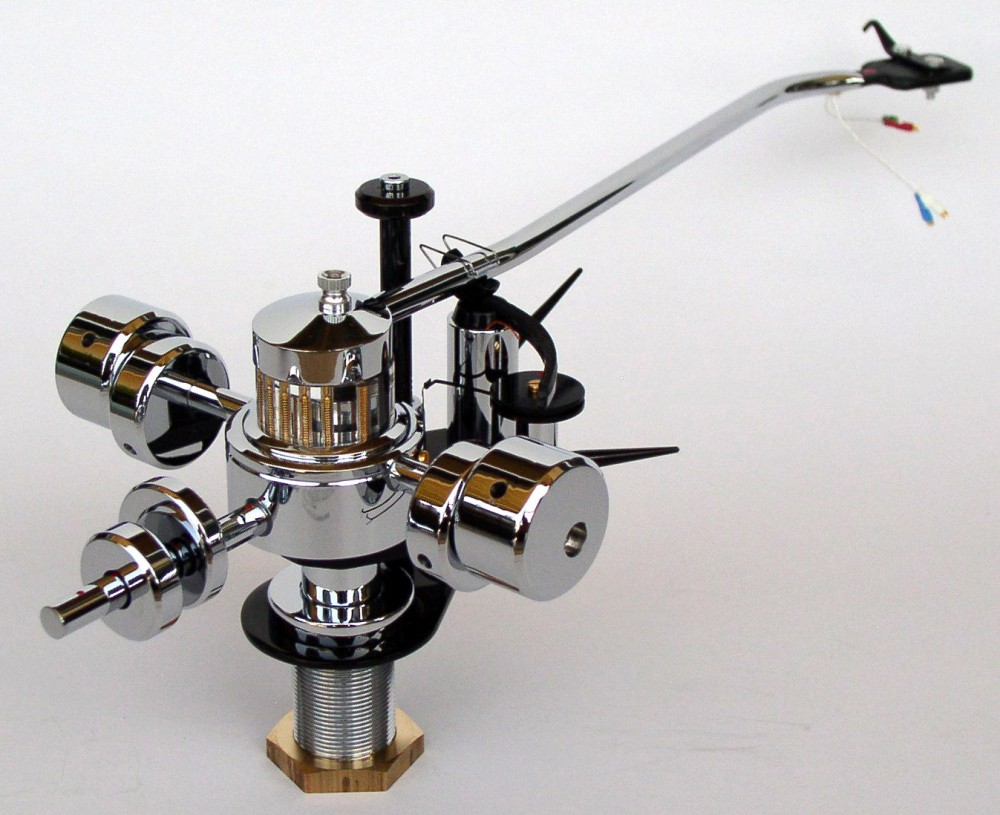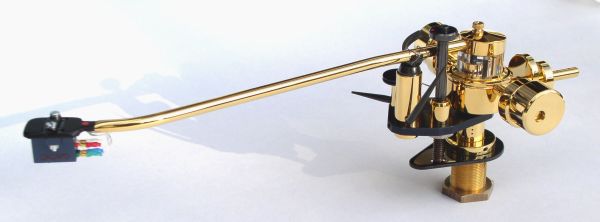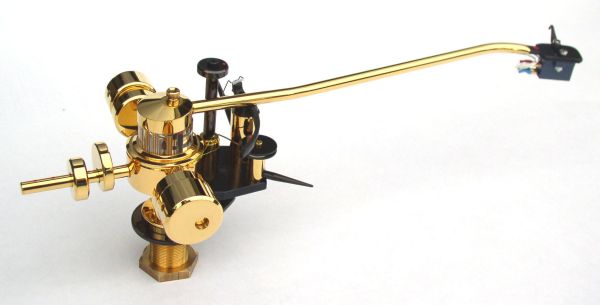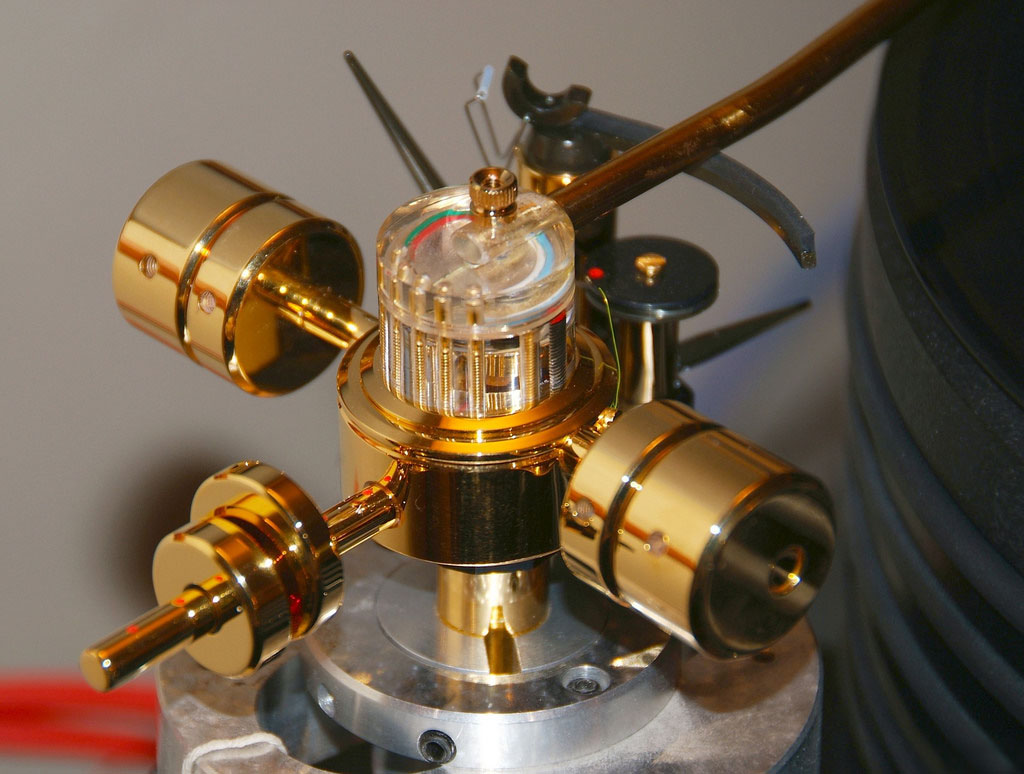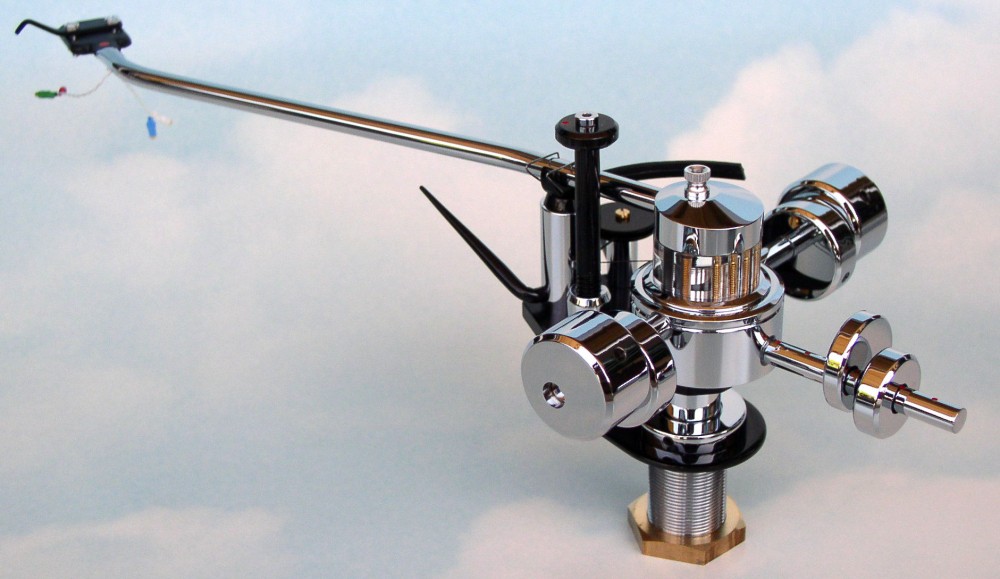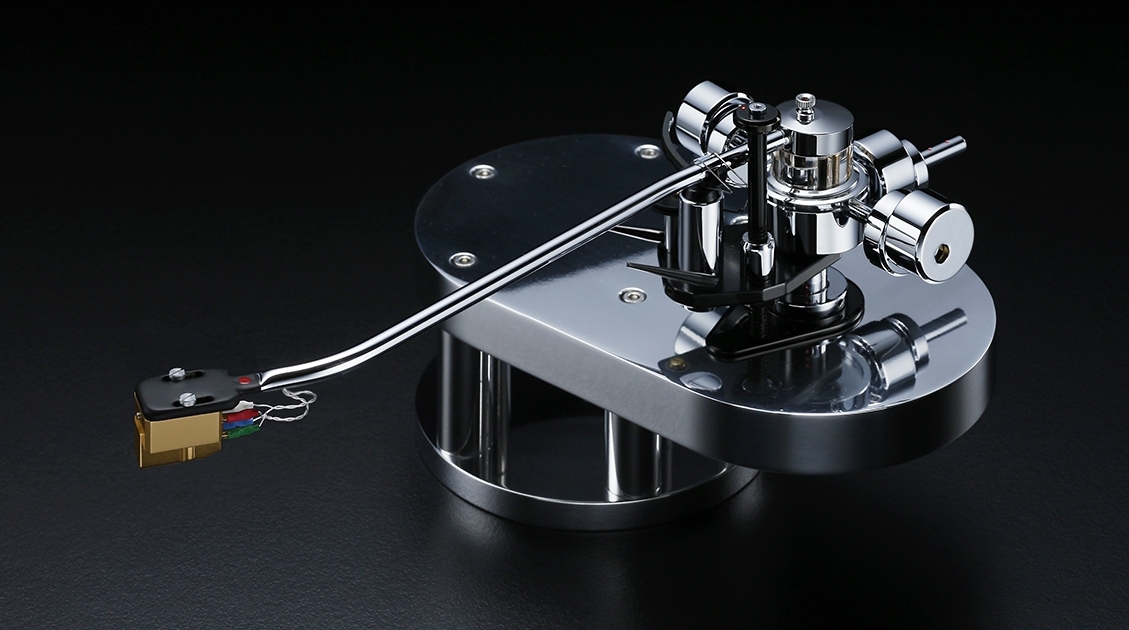丹麦Moerch(莫克) DP-8 黑胶唱臂
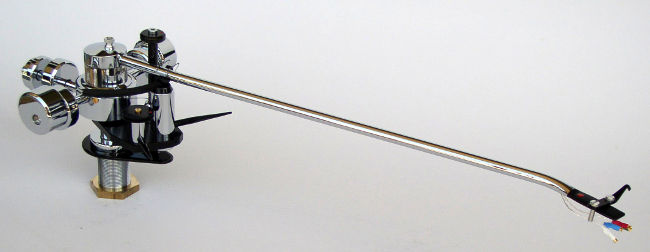
秉承一贯Moerch独特之双单点接触式支点平衡设计,循迹力比一般唱臂设计为佳。另设有VTA调节仪,可方便独立调校VTA。臂管导线均采用19芯纯银传讯及铁弗龙作绝缘的导线。除原有四个不同的重量铊,另加入两旁金属陀供用家调校左右平衡及不同重量和针压需求的唱头。Moerch唱臂另一优越设计是可更换唱臂管,因应不同类型唱头重量需要,而设有四款不同负重的唱臂管以供黑胶迷选购。每款臂管前端均有不同颜色点作记号识别不同重量,无需更换整支唱臂,就可安装不同唱重唱头。DP-8 Anisotropic分别设有9吋及12吋唱臂,镀铬及镀金版选择。
设四款不同重量臂管选择,对应不同重量唱头要求
四款臂管分别为:绿点4g, 红点6g, 黄点8g及蓝点14g
While playing a record, the tonearm must be able to move both horizontally and vertically horizontally as the cartridge moves towards the center of the re
cord, and vertically to allow for imperfections (warps and bumps) in the record.
At very low frequencies the modulation in the record is only horizontal. If the tonearm can move too freely horizontally the low frequency motion of the stylus will be transferred to the cartridge itself, while the cantilever of the cartridge almost does not move, and thus only a weak signal is induced.
To have excellent audio reproduction at these low frequencies, the horizontal movement of the tonearm must be restricted but to ensure perfect tracking this must be achieved without a similar restriction of the vertical movement. This anisotropic principle different characteristics for different directions of movement is the essence of the DP-8.
The DP-8 has a flywheel shaped central body and two weights on the sides to stabilize the movement of the tonearm horizontally. Thus, as the cartridge moves towards the center of the record, it can only follow the average location of the groove. It cannot follow the modulation, which is all transferred to the cantilever. This means that all the recorded bass, even the very low end of the range, is reproduced with full amplitude and dynamics.
